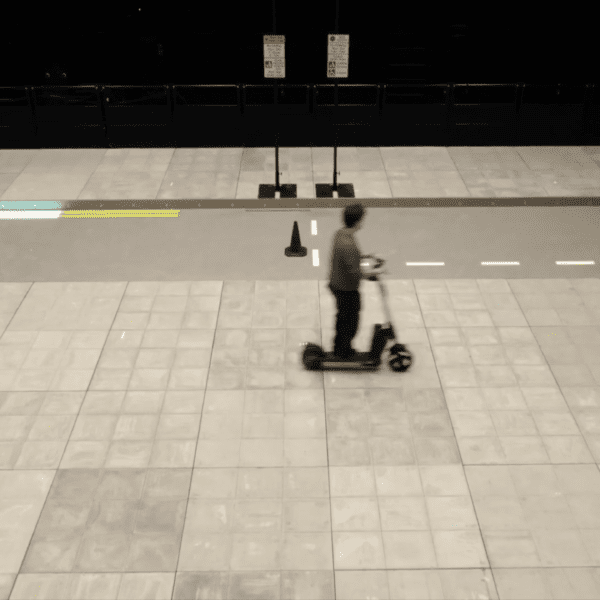29 Mrz 2022
Babcock’s high-tech moveable floor ‘paves’ the way for academics to study human behaviour when developing urban areas of the future

Engineers at Babcock have developed an innovative moveable floor to help academics simulate real-world outdoor environments and create the urban areas of the future.
Babcock partnered with University College London (UCL) on the People Environment Activity Research Laboratory (PEARL).
At PEARL, a 44,000m3 net-zero facility in Dagenham, East London, public settings such as railway stations and high streets are simulated to analyse human behaviour as they use and move around infrastructure.
In the centre is the configurable, 600m2 floor which was designed, manufactured and installed by Babcock.
The floor is made up of 441 individually actuated modules that can be raised, lowered and tilted in three dimensions, creating a real world environment where not everything is perfectly flat.
Using a tablet or laptop, researchers at UCL can configure the flooring for a simulation in as little as two to three minutes – compared to the two to three days it could have previously taken.
The precision of the actuators is to within 0.1mm – providing fine control over the heights and angles of the surface placed on top.
Richard Drake, Managing Director of Babcock Mission Systems, said:
“We were delighted to collaborate with UCL to help create an easily configurable, multi-sensory environment which will help urban planners design public infrastructure that can work for everyone.
“PEARL was a fascinating project to be involved with and a great example of how Babcock uses its expertise in mechanical handling, control systems and automation to create bespoke solutions for its customers.”
Sat on four adjustable feet, each 1.2m square module weighs 840kg and can be stacked two high for storage.
Together with specialist lighting, dynamic acoustic systems, environmental confounds and olfaction units, the flooring allows UCL to create a configurable, multisensory environment.
Researchers will be able to carry out interaction studies from micro-scale (brain activity) to macro-scale (e.g. crowd behaviour) and it will be used by a range of faculties including neurosciences, engineering and the arts.
The project, part of a £50 million investment by UCL’s Centre for Transport Studies, was delivered to budget and quality ahead of time.
Professor Nick Tyler, Chadwick Professor of Civil Engineering at UCL, said:
„The creation of PEARL has enabled us to build life-size environments and put real people in them to understand how they interact.
“It was conceived so we could see the environment as it is in real life, but to do this we had to realise the world isn’t flat, so we needed a moveable floor where we can easily adjust the gradient and surface while also having holes in it.
“We needed a company with the engineering expertise to tackle such a difficult problem of how you raise an artificial floor while still making it feel like solid ground. It was a fiendishly difficult task and Babcock were highly creative with their solution.”